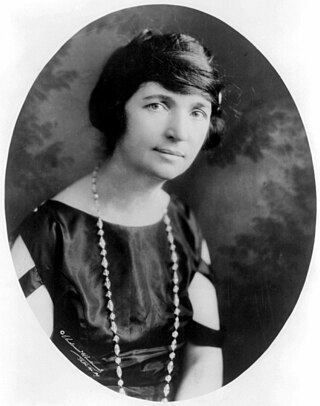
Margaret Higgins Sanger, also known as Margaret Sanger Slee, was an American birth control activist, sex educator, writer, and nurse. She popularized the term "birth control", opened the first birth control clinic in the United States, and established organizations that evolved into the Planned Parenthood Federation of America.

Katharine Houghton Hepburn was an American actress whose career as a Hollywood leading lady spanned six decades. She was known for her headstrong independence, spirited personality, and outspokenness, cultivating a screen persona that matched this public image, and regularly playing strong-willed, sophisticated women. She worked in a varied range of genres, from screwball comedy to literary drama, which earned her various accolades, including four Academy Awards for Best Actress—a record for any performer.

Katharine Dexter McCormick was a U.S. suffragist, philanthropist and, after her husband's death, heir to a substantial part of the McCormick family fortune. She funded most of the research necessary to develop the first birth control pill.

Katharine Houghton is an American actress and playwright. She portrayed Joanna "Joey" Drayton, a white woman who brings home her black fiancé to meet her parents, in the 1967 film Guess Who's Coming to Dinner. Katharine Hepburn, who played the mother of Houghton's character in the film, was Houghton's aunt. She is also known for her role as Kanna, the grandmother of Katara and Sokka in the film The Last Airbender (2010).
Schuyler Grant is an American former actress best known for playing Diana Barry in Anne of Green Gables (1985) and for other supporting roles in television.

Martha Carey Thomas was an American educator, suffragist, and linguist. She was the second president of Bryn Mawr College, a women's liberal arts college in Bryn Mawr, Pennsylvania.

Susan Grimes Walker is best known for her long commitment to women's suffrage, and for her involvement in progressive political organizations. In 1923, she became one of the first two women elected to the Massachusetts House of Representatives.
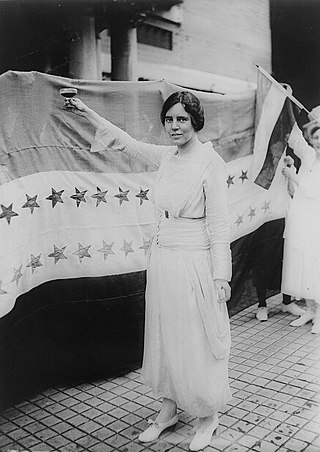
The Connecticut Women's Hall of Fame (CWHF) recognizes women natives or residents of the U.S. state of Connecticut for their significant achievements or statewide contributions.

Hilda Crosby Standish was a pioneer in the birth control movement in the state of Connecticut. In 1935, she became medical director of the Maternal Health Center in Hartford, the state's first birth control clinic. Dr. Standish was inducted into the Connecticut Women's Hall of Fame in 1994.

Valeria Hopkins Parker was an American physician and suffragette. A governor appointee as director of the Connecticut State Farm for Women (1919), she was the first "woman policeman ever to be given supervision over state policemen in the US", these being policewomen who supervised girls in the New London, Connecticut area. Among her other achievements, she was also the Executive Secretary of the US Interdepartmental Social Hygiene Board.
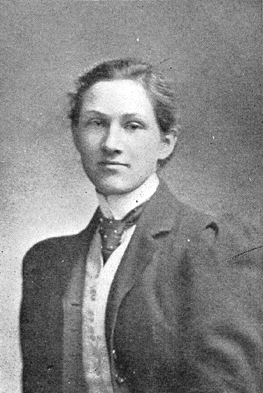
Edith Houghton Hooker was an American suffragist and social worker. She was a leader of the suffrage movement in Maryland in the early twentieth century and was posthumously inducted into the Maryland Women's Hall of Fame. She was a maternal aunt of actress Katharine Hepburn.
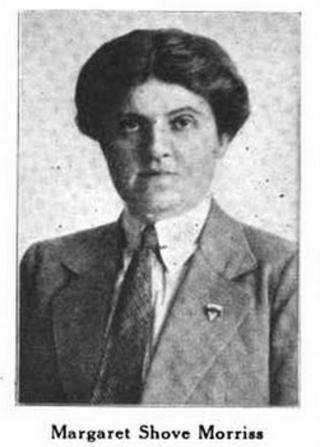
Margaret Shove Morriss was an American academic historian, She was the Dean of Women in charge of Pembroke College in Brown University from 1923 to 1950.

Mary Mackall "Mamie" Gwinn Hodder was an American educator. She taught at Bryn Mawr College, and was one of the founders of the Bryn Mawr School in Baltimore. Her relationships with M. Carey Thomas and Alfred Hodder were fictionalized in Gertrude Stein's short novel Fernhurst (1905).

Katrina Brandes Ely Tiffany was an American suffragist and philanthropist, from a prominent Philadelphia family.

Katharine Ludington was an American suffragist. She was the last president of the Connecticut Woman Suffrage Association, and a founding leader of the League of Women Voters.
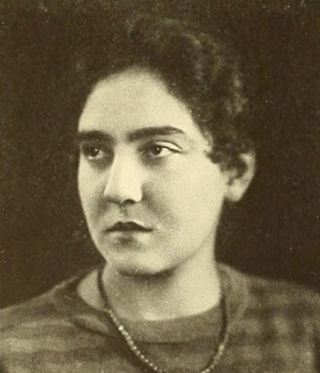
Alice Helen Palache Jones was an American banker.

Eleanor Dwight Cook Robertson Jones, known professionally as Mrs. F. Robertson Jones, was an American suffragist, feminist, and writer. She was president of the American Birth Control League from 1928 to 1935.

Josephine Day Bennett was an American activist and suffragist from Connecticut. She was a member of the National Women's Party (NWP) and campaigned for women's suffrage outside of the White House, leading to her arrest. Bennett was also involved in other social issues and was supportive of striking workers.
Marion Houghton Grant was an American historian, writer, and activist. She was the daughter of feminist Katharine Martha Houghton Hepburn and the sister of actress Katharine Hepburn. Her daughter Katharine Houghton and granddaughter Schuyler Grant are actresses.

Katharine Shepard was an American archaeologist and art historian. She was a curator at the National Gallery of Art in Washington, D.C., where she worked from 1941 until 1975.



















